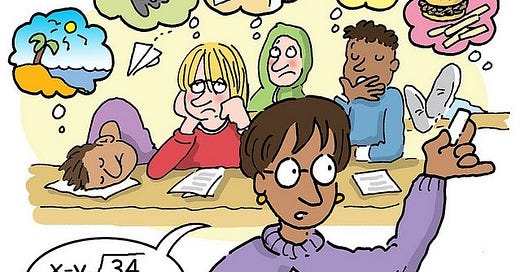It breaks the heart of every educator for their student to disengage from learning. She stops getting through to her student. Nowhere is this more consequential than in STEM education. Students who drop out of STEM disciplines (Science, Technology, Engineering, Arts and Maths) lower their earning potential.
What is the problem?
STEM education is hard when educators teach it in abstraction. Teachers have to work harder to create conceptual understanding of science phenomenon.
What is the solution?
A long-term practitioner of STEM education, Dr Hadiza Yusuf Nuhu, uses co-curriculum learning: extracurricular activities to reinforce lessons taught in class. Co-curricular learning increases student engagement, the first step in improving positive student outcomes.
The result
According to Dr Hadiza, proprietress of one of Kano’s largest school networks, Intercontinental Schools, when her ICT instructor asked to enrol foundation stage pupils in a coding programme she was sceptical. But not for long. She was shocked to find her pupils coding at age four. “One pupil developed a game which sparked the other pupils' imagination. Now everyone wants to create something.”
The challenges
STEM can be expensive. When Dr Hadiza started, parents were reluctant to pay for gadgets kids require. Her response was to fund procurement with the school's money. Today, the results have turned parents into ardent supporters of STEM education. Dr Hadiza says schools on a budget can start by buying the most affordable items.
Some schools don’t have skilled teachers for STEM. Najah, a school owner, partnered with an external partner to launch STEM in her school.
In Nigeria, the curriculum (NERDC) does not support co-curriculum learning. Dr Hadiza says schools shouldn't wait for the government. They developed their scheme.
How to start STEM
Start by going through your curriculum with teachers to find synergies across the different STEM disciplines - maths, biology, chemistry, physics, earth sicence, design, etc. When a single class project meets learning goals across different disciplines, it reduces duplication.
Work with your teachers to identify which extracurricular activities can assist learning objectives for each lesson taught in class.
Integrate Arts into STEM, also known as STEAM (Science, Technology, Engineering, Arts and Maths.) Arts unleash student creativity and drives discovery. "Arts make science and maths come to life" says Dr Hadiza.
Use the appropriate learning approach, for example, support students to develop process skills for inquiry-based learning.
I want to engage in co-curriculum learning
Resources to support co-curriculum learning exist. Dr Hadiza for example invites other schools that want to learn how to do it. If you are interested in it, I am happy to facilitate contact with needed resources.






Base on my understanding, simulation is simple terminology, refers to the process of impacting science and technical knowledge to a learner through using simple tools so as, to make students centered learning. Pls, I need comments.